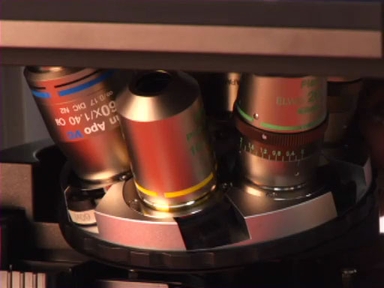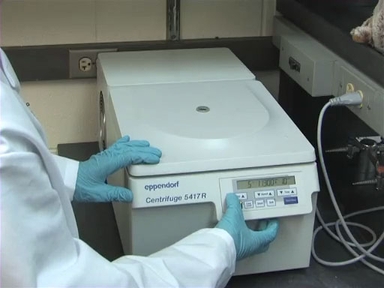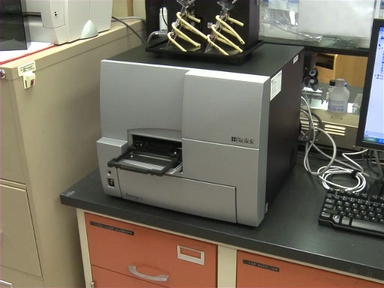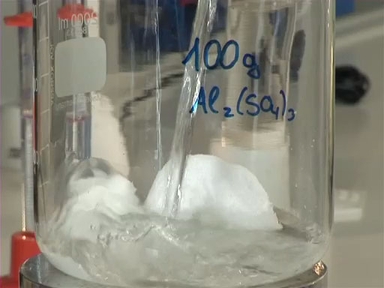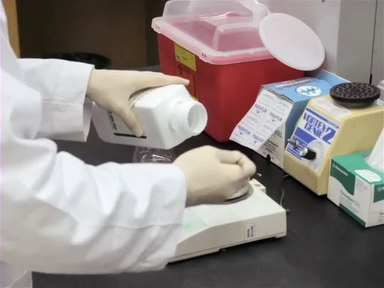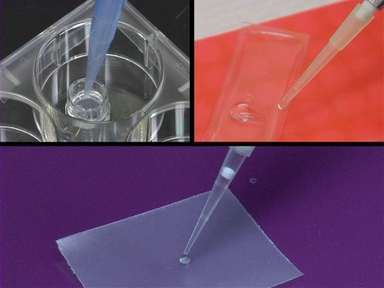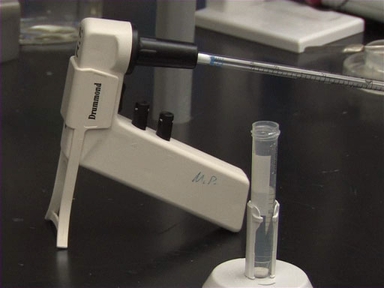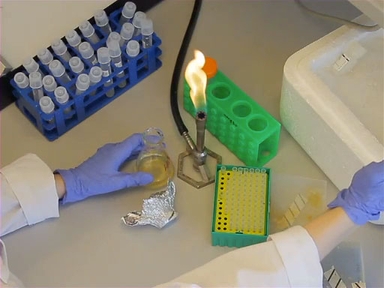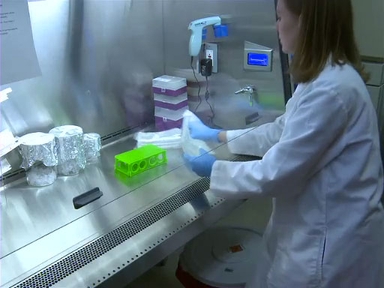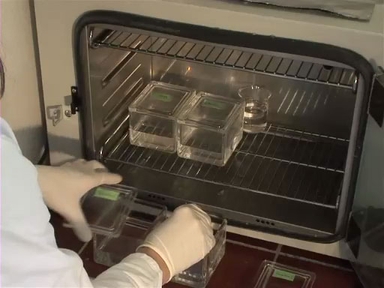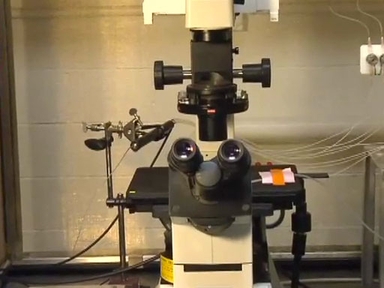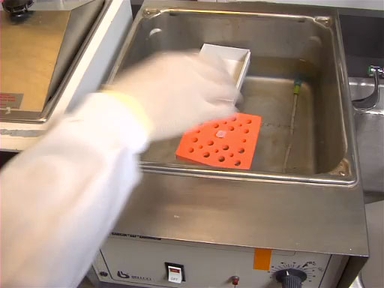The light microscope is an instrument used for magnifying research specimens. Light microscopes are an invaluable analytical tool that have the potential to allow scientific investigators to view objects at 1000 times their original size. As you will see, the light microscope operates via some very basic principles but has nearly limitless applications for visualizing specimens in the lab.
As its name implies the light microscope requires a light source, which produces light that can be focused, by a condenser lens, onto the sample.
The light that illuminates the specimen reaches a lens known as the objective lens, which creates a magnified image that is inverted, or turned upside down. The eyepiece, or ocular lens, further magnifies the image, which the eye then receives. Additional optical elements can be introduced into the light path to right the image, so that the eye sees it in the correct orientation. Microscopes that utilize multiple lenses like the one you see here are referred to as compound microscopes.
In a compound microscope, the total magnification is calculated by multiplying the magnification of the objective lens by the magnification of the ocular lens, or eye piece. With a 40X objective lens and a 10X ocular lens, the total magnification is 400X.
To help estimate the size of objects under the microscope, an eyepiece reticle, a scale that’s projected over the image can be used. At higher magnification, the tick marks in the eyepiece reticle will represent smaller distances, than when viewed at lower magnifications.
In addition to magnification, another aspect of microscope optics is resolution. Resolution refers to the shortest resolvable distance between two objects under the scope. As the heads of these characters becomes more and more clear, and the resolution increases, the shortest observable distance between them decreases.
The main components of the light microscope include the objectives, the eyepieces, the specimen stage and specimen holder, the light source, the field diaphragm, the condenser and aperture, and the coarse and fine focus knobs.
The objectives are responsible for most of the magnification and resolution of the microscope. They are mounted on a rotating nosepiece in such a way that as the objectives are changed, the focal plane stays the same – a property referred to as parafocality. An objective can be marked with the magnification, the numerical aperature, or N.A., the type of immersion medium required, the coverslip thickness that should be used when mounting samples, and the working distance - the distance from the tip of the lens element to the focal plane in the sample.
The numerical aperture, again, defined as N.A., is a measure of how well a microscope objective can gather light. High N.A. objectives allow light at oblique angles to pass through while low N.A.objectives require more direct light. The resolution of an objective can be calculated from the numerical aperture, given the wavelength of light.
The light source, field diaphragm, aperture, and condenser are all responsible for producing the light and delivering it to the sample.
The light source is typically a low voltage halogen bulb that can be adjusted to control light intensity.
The light then passes through a variety of filters and into the field diaphragm, which controls the area of the specimen to be illuminated.
Next is the condenser, which focuses bright, light on the specimen, the cone of illumination around the specimen is controlled by the condenser and must be adjusted depending on the objective that’s used.
To begin using the light microscope, place a sample containing the region of interest on the microscope stage, center it directly over the objective, and secure it into place using the stage clips.
Next, turn on the light source and switch to the lowest powered objective.
Next, focus the low powered objective by moving it in the z-direction using an initial adjustment of the coarse adjustment knob, and then rotating the fine adjustment knobs to bring the object in sharp focus. Take care not to hit the slide or stage with the objective as this could damage the lens.
Then, locate the area of interest by looking through the eye pieces while adjusting the knobs to move the slide in the x and y directions. The size of the field of view will decrease drastically as you move from a low magnification, to higher magnification.
Centering the lowest powered objective on the area of interest before moving to higher power greatly increases the chances of finding the desired specimen.
Once the sample has been located at low power and is in focus, move to the higher power objective that will be used for acquiring images.
Optimize the quality of the lighting by first adjusting the field diaphragm so that the diaphragm itself is just outside of the field of view.
Next, adjust the condenser diaphragm so that the settings match the numerical aperture of the objective in use.
Finally, adjust the focus again. This time only using the fine adjustment knob.
You are now ready to take images of your specimen.
Light microscopy has the potential to visualize a wide range of specimens, and various configurations of the compound microscope exists to suit many different applications.
Here, you see a researcher preparing to work under a surgical microscope. These microscopes are generally suspended on a movable arm and are stereoscopic, meaning that they allow light to pass to the viewer and also a camera mounted on the microscope. This surgical microscope is being used in a kidney transplantation procedure, in mice.
In this clip, you see a researcher looking through a dissecting microscope, while picking out the perfect drosophila larvae for further dissection , in order to expose the body wall muscles so the neuromuscular junction can be studied.
Here you can see an inverted compound microscope, which has an objective below the stage, being prepared for a microinjection technique. This procedure, known as somatic cell nuclear transfer, is an important method for generating transgenic animals and creating clones.
You’ve just watched JoVE’ introduction to Light Microscopy.
In this video we reviewed: what a microscope is and how it works, its many components, how to make adjustments to them, and how to acquire quality images. Thanks for watching!
